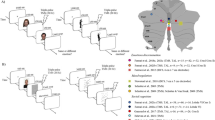Abstract
Non-invasive brain stimulation techniques are a powerful approach to investigate the physiology and function of the central nervous system. Recent years have seen numerous investigations delivering transcranial magnetic stimulation (TMS) and or transcranial direct current stimulation (tDCS) to the cerebellum to determine its role in motor, cognitive and emotional behaviours. Early studies have shown that it is possible to assess cerebellar-motor cortex (CB-M1) connectivity using a paired-pulse TMS paradigm called cerebellar inhibition (CBI), and indirectly infer the state of cerebellar excitability. Thus, it has been shown that CBI changes proportionally to the magnitude of locomotor learning and in association with reaching adaption tasks. In addition, CBI has been used to demonstrate at a physiological level the effects of applying TMS or tDCS to modulate, up or down, the excitability of cerebellar-M1 connectivity. These studies became the fundamental substrate to newer investigations showing that we can affect motor, cognitive and emotional behaviour when targeting the cerebellum with TMS or tDCS in the context of performance. Furthermore, newer investigations are starting to report the effects of cerebellar non-invasive stimulation to treat symptoms associated with neurological conditions such as stroke and dystonia. Altogether, given the scarcity of current effective therapeutic options, non-invasive cerebellar stimulation can potentially become a game changer for the management of conditions that affect the cerebellum. This brief manuscript presents some of the current evidence demonstrating the effects of cerebellar stimulation to modulate motor behaviour and its use to assess physiological processes underlying motor learning.

Similar content being viewed by others
References
Ugawa Y, Day BL, Rothwell JC, Thompson PD, Merton PA, Marsden CD. Modulation of motor cortical excitability by electrical stimulation over the cerebellum in man. J Physiol Lond. 1991;441:57–72.
Ugawa Y, Uesaka Y, Terao Y, Hanajima R, Kanazawa I. Magnetic stimulation over the cerebellum in humans. Ann Neurol. 1995;37:703–13.
Pinto AD, Chen R. Suppression of the motor cortex by magnetic stimulation of the cerebellum. Exp Brain Res. 2001;140:505–10.
Werhahn KJ, Taylor J, Ridding M, Meyer BU, Rothwell JC. Effect of transcranial magnetic stimulation over the cerebellum on the excitability of human motor cortex. Electroencephalogr Clin Neurophysiol. 1996;101:58–66.
Jayaram G, Galea JM, Bastian AJ, Celnik PA. Human locomotor adaptive ability is proportional to depression of cerebellar excitability. Cereb Cortex. 2011;21(8):1901–9.
Morton SM, Bastian AJ. Cerebellar contributions to locomotor adaptations during splitbelt treadmill walking. J Neurosci. 2006;26(36):9107–16.
Reisman DS, Wityk R, Silver K, Bastian AJ. Locomotor adaptation on a split-belt treadmill can improve walking symmetry post-stroke. Brain. 2007;130(pt 7):1861–72.
Yanagihara D, Kondo I. Nitric oxide plays a key role in adaptive control of locomotion in cat. Proc Natl Acad Sci U S A. 1996;93:13292–7.
Schlerf JE, Galea JM, Bastian AJ, Celnik P. Dynamic modulation of cerebellar excitability for abrupt, but not gradual, visuomotor adaptation. J Neurosci. 2012;32(34):11610–7.
Ito M. Cerebellar control of the vestibulo-ocular reflex—around the flocculus hypothesis. Ann Rev Neurosci. 1982;5:275–97.
Nitsche MA, Paulus W. Excitability changes induced in the human motor cortex by weak transcranial direct current stimulation. J Physiol Lond. 2000;527(Pt 3):633–9.
Huang YZ, Edwards MJ, Rounis E, Bhatia KP, Rothwell JC. Theta burst stimulation of the human motor cortex. Neuron. 2005;45(2):201–6.
Chen R, Classen J, Gerloff C, Celnik P, Wassermann EM, Hallett M, et al. Depression of motor cortex excitability by low-frequency transcranial magnetic stimulation. Neurology. 1997;48(5):1398–403.
Fitzgerald PB, Fountain S, Daskalakis ZJ. A comprehensive review of the effects of rTMS on motor cortical excitability and inhibition. Clin Neurophysiol. 2006;117(12):2584–96.
Nitsche MA, Paulus W. Transcranial direct current stimulation-update 2011. Restor Neurol Neurosci. 2011;29(6):463–92.
Fritsch B, Reis J, Martinowich K, Schambra HM, Ji Y, Cohen LG, et al. Direct current stimulation promotes BDNF-dependent synaptic plasticity: potential implications for motor learing. Neuron. 2010;66(2):198–204.
Galea JM, Jayaram G, Ajagbe L, Celnik P. Modulation of cerebellar excitability by polarity-specific noninvasive direct current stimulation. J Neurosci. 2009;29(28):9115–22.
Rampersad SM, Janssen AM, Lucka F, Aydin U, Lanfer B, Lew S, et al. Simulating transcranial direct current stimulation with a detailed anisotropic human head model. IEEE Trans Neural Syst Rehabil Eng. 2014;22(3):441–52.
Popa T, Russo M, Meunier S. Long-lasting inhibition of cerebellar output. Brain Stimul. 2010;3(3):161–9.
Grimaldi G, Argyropoulos GP, Boehringer A, Celnik P, Edwards MJ, Ferrucci R, et al. Cerebellum. 2014;13(1):121–38.
Galea JM, Vazquez A, Pasricha N, de Xivry JJ O, Celnik P. Dissociating the roles of the cerebellum and motor cortex during adaptive learning: the motor cortex retains what the cerebellum learns. Cereb Cortex. 2011;21:1761–70.
Reis J, Schambra HM, Cohen LG, Buch ER, Fritsch B, Zarahn E, et al. Noninvasive cortical stimulation enhances motor skill acquisition over multiple days through an effect on consolidation. Proc Natl Acad Sci U S A. 2009;106(5):1590–5.
Jayaram G, Tang B, Pallegadda R, Vasudevan EV, Celnik P, Bastian A. Modulating locomotor adaptation with cerebellar stimulation. J Neurophysiol. 2012;107(11):2950–7.
Herzfeld DJ, Pastor D, Haith AM, Rossetti Y, Shadmehr R, O′Shea J. Contributions of the cerebellum and the motor cortex to acquisition and retention of motor memories. NeuroImage. 2014;98:147–58.
Hardwick RM, Celnik PA. Cerebellar direct current stimulation enhances motor learning in older adults. Neurobiol Aging. 2014;S0197–4580(14):00288–7.
Block HJ, Celnik P. Can cerebellar transcranial direct current stimulation become a valuable neurorehabilitation intervention? Expert Rev Neurother. 2012;12:1275–7.
Hoffland BS, Bologna M, Kassavetis P, Teo JT, Rothwell JC, Yeo CH, et al. Cerebellar theta burst stimulation impairs eyeblink classical conditioning. J Physiol. 2012;590(Pt 4):887–97.
Bonnì S, Ponzo V, Caltagirone C, Koch G. Cerebellar theta burst stimulation in stroke patients with ataxia. Funct Neurol. 2014;7:1–5.
Koch G, Porcacchia P, Ponzo V, Carrillo F, Cáceres-Redondo MT, Brusa L, et al. Effects of Two Weeks of Cerebellar Theta Burst Stimulation in Cervical Dystonia Patients. Brain Stimul. 2014 May 9. pii: S1935-861X (14) 00172–7.
Acknowledgments
Pablo Celnik receives funding from the NIH grants 1R01HD053793 and R01HD073147. Dr. Amy Bastian helped design and draw Fig 1.
Conflict of Interest
The author has no conflict of interest.
Author information
Authors and Affiliations
Corresponding author
Rights and permissions
About this article
Cite this article
Celnik, P. Understanding and Modulating Motor Learning with Cerebellar Stimulation. Cerebellum 14, 171–174 (2015). https://doi.org/10.1007/s12311-014-0607-y
Published:
Issue Date:
DOI: https://doi.org/10.1007/s12311-014-0607-y




